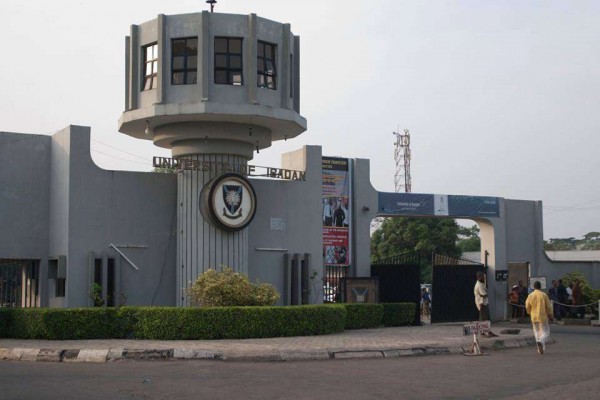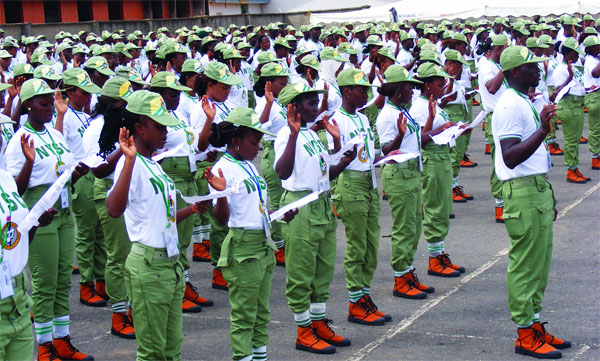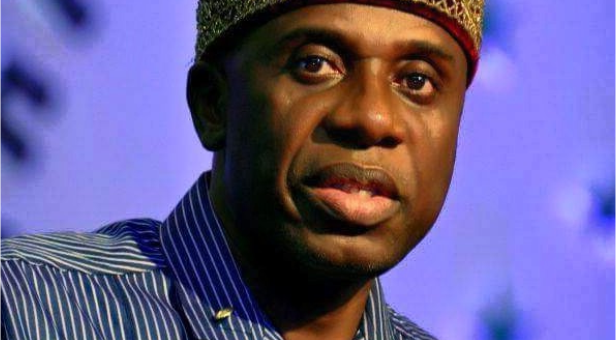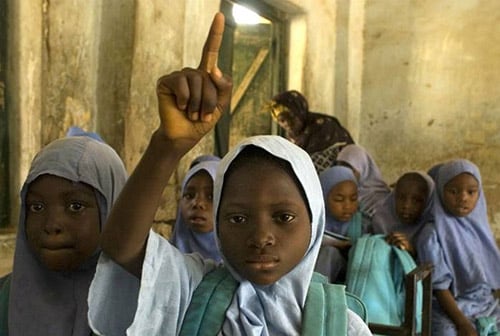BY FESTUS ADEDAYO
If you didn’t know the gravity of the offence committed by those who decreed history out of the Nigerian educational curriculum, when you read Femi Kehinde’s ‘Of Rusts and Gold: Snippets of History’, you will agree that they deserve to be arraigned by the public square and forced to drink a more poisonous variant of the Socratic hemlock. Indeed, they deserve ample pages in national book of dishonour. They are enemies of our past and enemies of our future.
Historians are concerned with the quest for an interpretation of the past as a vehicle for an explanation of the future. Historians can thus be likened to a smog-covered old man in the smithy who is labouring relentlessly to forge a true discourse of the past, as he deploys narratives and analyses of past events and occurrences to define the future.
The 249-page book is a historical nugget which tells you that the knowledge of the past is an invaluable chunk of a tripod of yesterday, today and tomorrow. It is a confirmation of the warning of Marcus Mosiah Garvey, Jr. (17 August 1887 – 10 June 1940) a Jamaican political leader, that a people without the knowledge of their past history, origin and culture is like a tree without roots. The book provides the essential connect between today, yesterday and tomorrow by giving explanations of seemingly inexplicable and complex nuances of yesterday.
Advertisement
For instance, with traditional tales by the moonlight having gone into extinction, and the youth of today believing that the apogee of existence is wealth and political power, it is necessary to acquaint them with the story of those who traversed this land with such mundane and warped reasoning but ended their lives tragically.
For example, in any equation where wealth for personal aggrandizement and wealth for communal exhortation are in issue, the story of the duo of Ibadanland’s Sanusi Adebisi Giwa, also known as Adebisi Idi Ikan, an exceptionally wealthy man in the early 20th century, and Salami Agbaje would serve some didactic lessons. While the former’s wealth held a conspicuous benefaction to the community – borrowing from the author’s language – the latter’s wealth was circumscribed round the narrow confine of self and immediate community. This provoked the refrain in the folklore, Ile Adebisi lati je malu tawo tawo, awa o je dodo nile Salami. You will find the details in Kehinde’s Of Rusts and Gold.
Decades after the demise of these two characters, in same Ibadanland, when the naive political world began to excoriate the Ibadan stormy petrel, Lamidi Adedibu at his exit, as a political hooligan, the common people were quick to come to his rescue by saying that that they could at least have access to Adedibu’s vast compound in Molete to eat a steamy hot plate of amala but could not even access the highly barbed wire fence of the home of another rich and famous kinsman of his at his Foot of Ishin Tree Compound in Ibadan. It takes historical troubadour to follow these tissues of history and thus access the empirical lessons in this book under review.
Advertisement
Of particular importance in the book as a historical work and at the same time a didactic piece of art is its retelling of the Agbekoya uprising story. The Agbekoya had held the Western Region government to ransom, in the mould of how the famous Funmilayo Ransom-Kuti – Fela’s mother – held the town of Abeokuta spellbound with almost 20,000 women, in protest against the perceived conspiratorial collaboration between the Alake of Egba, Oba Gbadebo and the white supremacists of the time in exploiting the natives through high taxation. Tafa Adeoye had led the insurrection. Rumoured to be invisible and invincible, the authorities, after several months of their inability to get him arrested, merely entrapped him with a woman police detective whom Tafa fell in love with and “married.” His arrest thereafter was a fait accompli. This piece of history will warn off men in power today with concupiscent desire for Wole Soyinka’s Daughters of Discord.
Broken into different chapters that dwell on topics, Kehinde’s Of Rusts and Gold is an ‘unputdownable’ piece of historical research that will keep anyone interested in the strides of our recent forebears glued to it, until the last page is exhausted.
For instance, how many people know that right here on this soil of Ibadanland; indeed, right here at the University of Ibadan, many spousal engagements which resulted in famous marriages and renowned children, were sired? For instance, Kehinde’s Of Rusts and Gold reveals that Laide and Wole Soyinka’s marriage; those of Ayo and Adetoun Ogunseye; Ojetunji and Bimpe Aboyade; Chinua and Christy Achebe; Olumuyiwa and Bolanle Awe; Christopher Okigbo and Judith Sefinat Attah; Olusegun and Funke Agagu, and many more, had their spousal broths cooked right here on the soil of the University of Ibadan. It is one of the nuggets of history that you will encounter in the book.
In Kehinde’s Of Rusts and Gold, you will encounter an Amazon like Alhaja Humoani Alaga, who single-handedly established the Isabatudeen Grammar School in Ibadan in 1964. The episcopal hostility towards Muslim girls getting admission at Christian Girls’ schools in Ibadan was said to have been heavy, thus necessitating this early entrepreneur walking up to Premier S. L. A. Akintola for permission to construct a girls’ school, the outcome of which is the school under reference.
Advertisement
How many people know that the cliché we bandied about at youth which we translated verbatim from the Western Nigerian Broadcasting Corporation (WNBC) and which subsequently became a refrain among youths of the time – O jogede dudu inu n tapon Or B’Olubadan ba ku, ta ni o j’oye? was actually “This is the Western Nigerian Broadcasting Station?” And that the then Timi of Ede, Oba John Laoye, a renowned drummer, born in 1899, was the drummer behind it? Laoye was a close friend of the Jewish-German scholar and writer, Ulli Beier, a professor of extra-mural studies, and his wife, the Austrian artist, Sussan Wenger, and were living with him in Ede. At his passage, Alhaji Maitama Sule described Laoye as “the king who made music” while General Yakubu Gowon’s epitaph on him was “torch bearer of Nigerian cultural heritage, one of the nation’s greatest patriots of our arts and culture.”
The author’s retelling of the story of the Olowo of Owo, Oba Olateru Olagbegi II, who was Oba twice in the ancient town of Owo, is particularly interesting. Caught in the salvo of First Republic politics and the corrosive schism between the UPGA and NNDP political groups, Olagbegi had pitched his tent with the Master of Ambiguities, Diplomat, humorist and wordsmith father of Modele – SLA Akintola and became a sworn enemy of his erstwhile friend, Michael Adekunle Ajasin, a fellow Omolowo Made. Olagbegi was deposed by General Adeyinka Adebayo in February, 1968. Twenty-three years after, the government of Bamidele Olumilua reinstated him to the palace, thus making him one of the few traditional rulers to rule his people twice, after Oba Gbadebo, the Alake of Egbaland, dethroned by the Egba women riots of 1922.
One of the most interesting historical renditions in the book is that of Oba Adeniran Adeyemi II, the father of the current Alaafin, Iku Baba Yeye, Oba. Lamidi Adeyemi III. Not dissimilar to that of Oba Olagbegi, the government of the Western Region had smelled his diametric opposition to its government, especially his perceived metaphysical entrapment and eventual death of one of his subjects, Bode Thomas, then Deputy Leader of the Action Group. Thomas was adjudged even by the Sardauna of Sokoto, Ahamadu Bello as “arrogant and ungracious.” In 1953 while he was the Divisional Council Chairman of Oyo, with Alaafin as a member, the 35-year old man of power had reportedly berated Oba Adeniran, who was in his 60s, for sitting down while other members stood at his appearance. Se’mi lon gbo mon baun? (Am I the one you are barking at?) Oba Adeniran reportedly asked. And Thomas barked to his death on November 23, 1953, a day after the encounter, thus beginning Oba Adeniran’s travails as he was dethroned and banished to Ilesha and later, Egerton Street on Lagos Island where he died in 1960.
As Odolaye Aremu, the Ilorin Dadakuwada music exponent sang, a father translates mortality for immortality when he leaves the world’s stage and has his son continue in his strides. Oba Lamidi Adeyemi has succeeded in conferring immortality on his father in almost five decades of succeeding him, even though he passed through several vicissitudes and travails before becoming the Alaafin. His father’s plan to send him to England for further studies had been cut short by his monarchical tribulations but his belief in Lamidi’s future royalty was unassailable. Oba Adeniran had noted the lacerations on the young Lamidi’s left breast and the black spots on his leg at birth that were akin to his, as furtherance of Lamidi’s divine future royal status. Today, Oba Lamidi Adeyeymi has not only lifted the Oyo monarchy to the level of the numero uno traditional stool in Yorubaland and I dare say, Nigeria, but has sustained the myth, panache and aura of the stool.
Advertisement
Two other historical renditions will attract the attention of the reader of Kehinde’s Of Rusts and Gold. They are the story of Reverend Timothy Fakunle and the author of Yoruba novels of magical realism, D. O. Fagunwa. Reverend Fakunle had established the famous Fakunle Comprehensive High School in Osogbo in 1963 but those imposing structures were bulldozed by the current government in the state through its queer and byzantine readjustment of schools policy. Kehinde posed the Latin question qui bono (in whose interests?) to the absurd governmental decision and wants it answered by all and sundry in our various engagements, either at the personal or governmental level, if we indeed want the uplift of our society.
Kehinde weaves the story of Fagunwa, author of those books that kept the airs on our heads standing erect in his fabulous books on folk philosophy, in a an equally mythical manner like a weaver does his artistry. Fagunwa’s books – Ogboju Ode Ninu Igbo Irunmole, Ireke Onibudo, Aditu Olodumare and others, draw heavily on oral traditions. Kehinde’s book contains never-heard of stories about how Fagunwa wrote those books, his first £20 royalty from Ogboju Ode paid by CMS Books, its publishers, his last manuscript, Ireola Olodumare, which was never seen till today; how he, like the inscrutable gnomes he wrote about in the books, penned his manuscripts inside the forest and the tragic story of his death in Lokoja, in a boat capsize mishap. Fagunwa’s corpse was found after three days by the natives intact, his wrist watch on, his agbada on his body, his shoes on his legs and even his glasses sitting regally on his eyes. The gnome had gone home!
Advertisement
Kehinde’s Of Rusts and Gold is a historical compilation and worthy work of historiography which is unique and extraordinary. His remarkable affixation of dates to events is awesome and commendable. The book is indeed a journey into our recent history and a priceless book that every of our children must be made to read. Written in fluid and accessible language, it is one good news that is coming from the Nazareth of the National Assembly where all we are inundated with are stories of our lawmakers acquiring the latest Bentley for N180million and their hyper-stupid and hyper-stupendous salaries. On the converse, his is one ex-lawmaker who has underscored the glamour in erudition.
However, perhaps because the pieces therein are a compilation of published newspaper articles, Kehinde’s Of Rusts and Gold has too many boring repetitions which it should have done without. It is also interspersed with a negatively generous usage of comma which is unnecessary. Gratefully however, none of these shortcomings can mar its credential as a first class historical work that burrows deep into unknown territories.
Advertisement
Dr. Adedayo delivered the review of the book at the Trenchard Hall of the University of Ibadan on October 19, 2016.
Advertisement
Views expressed by contributors are strictly personal and not of TheCable.
Add a comment






